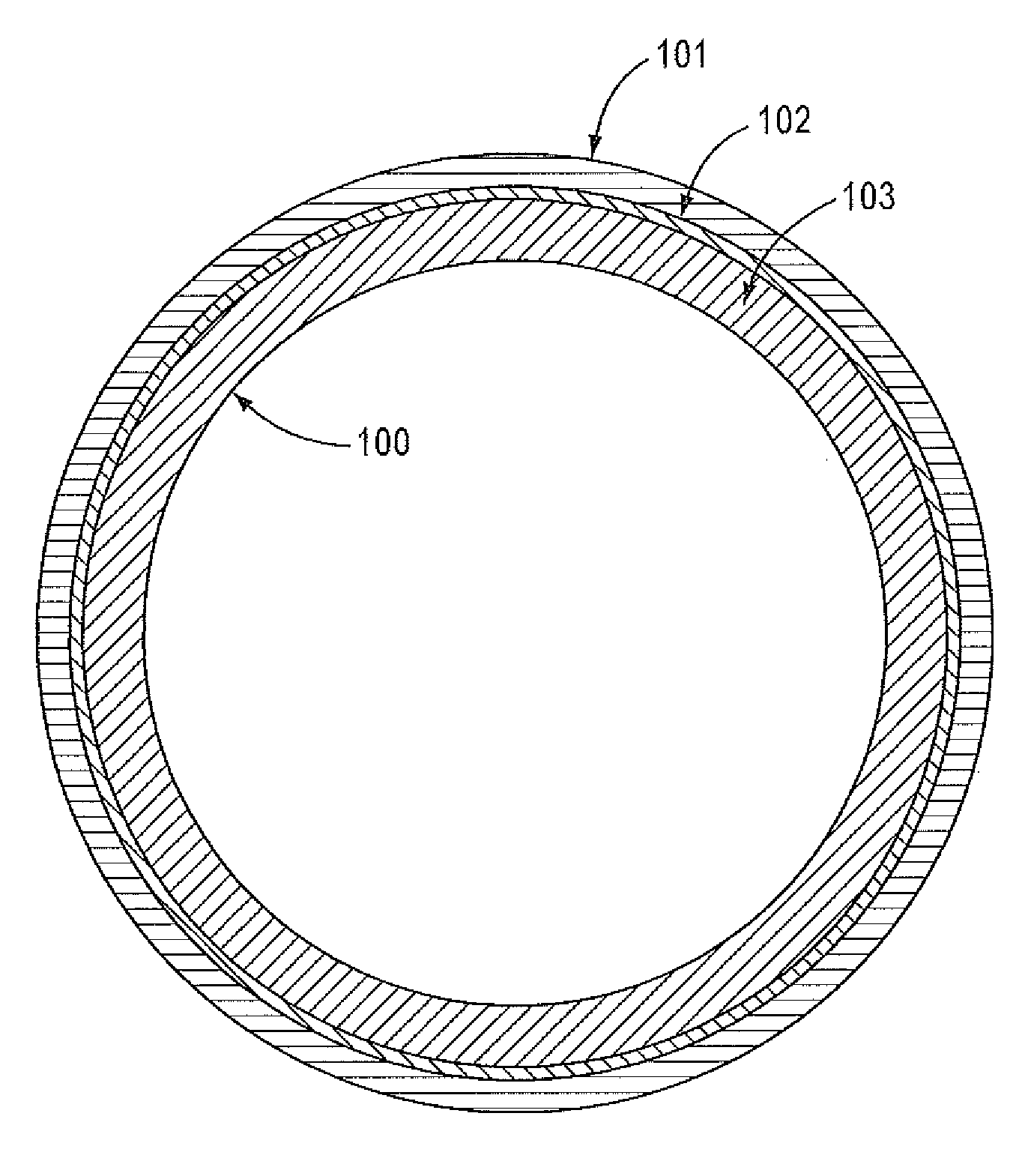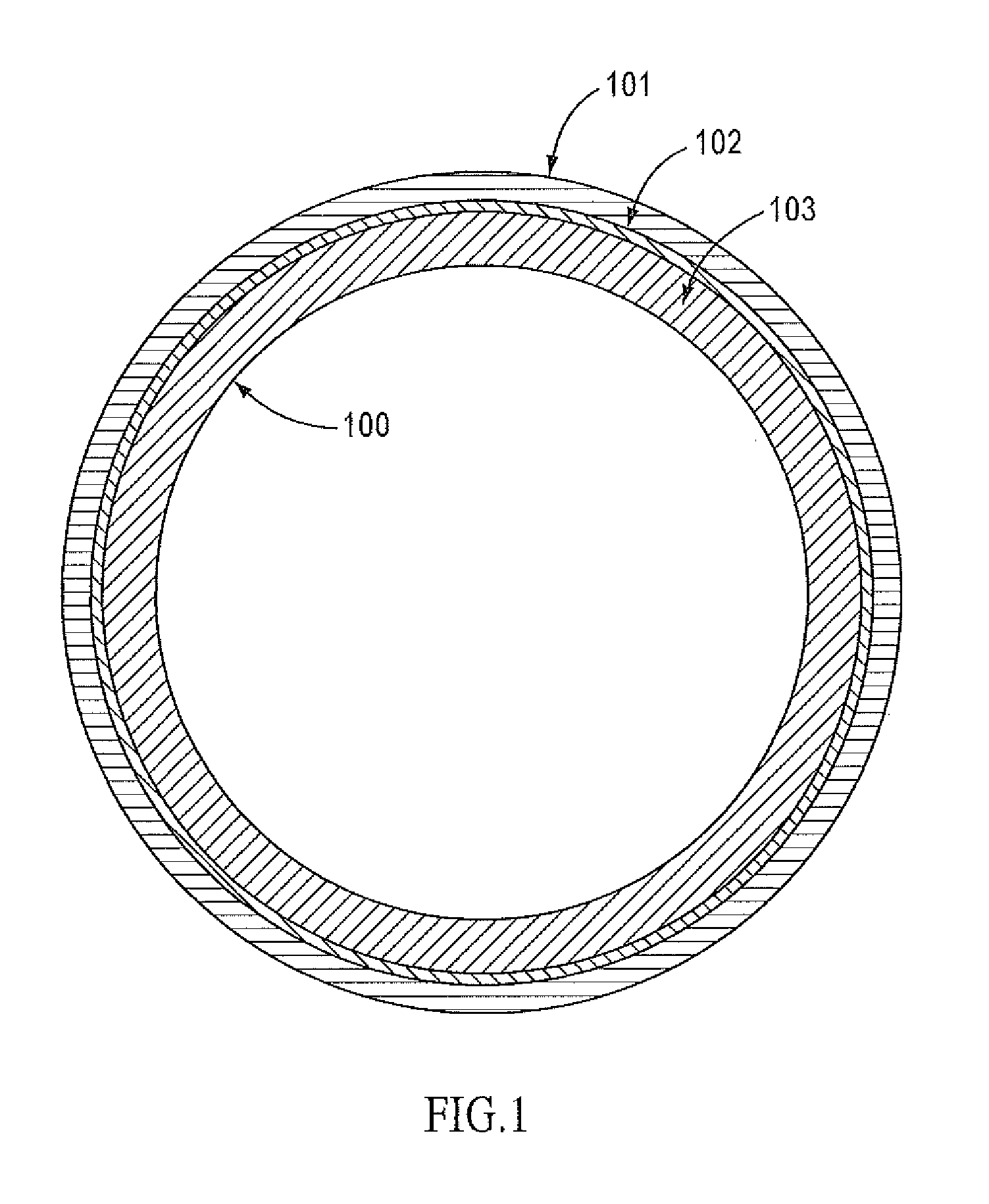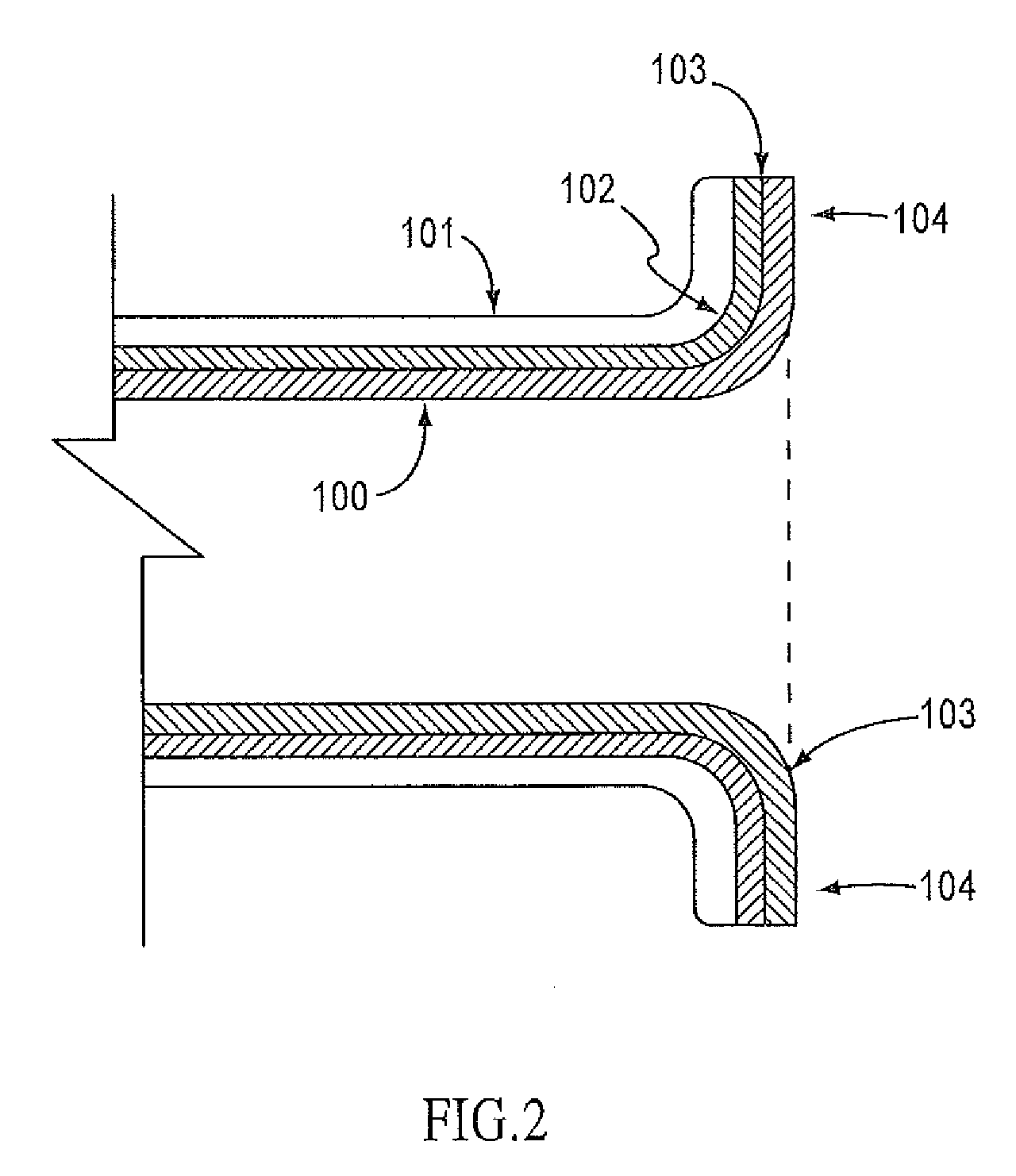Joint and joining method for multilayer composite tubing and fittings
a multi-layer composite tubing and composite tubing technology, applied in the direction of non-disconnectible pipe joints, bends, manufacturing tools, etc., can solve the problems of virtually undetectable joints in piping materials, adverse effects on finished products or affect tests, and water will tend to become contaminated
- Summary
- Abstract
- Description
- Claims
- Application Information
AI Technical Summary
Benefits of technology
Problems solved by technology
Method used
Image
Examples
Embodiment Construction
[0026]The present disclosure overcomes many of the prior art problems with joints and joining of high purity water tubing and piping systems. In general, the joints and joining methods are used to create extensive yet highly sanitary plumbing networks. Among other features and benefits, the disclosed joints and joining methods facilitate high quality and strong joints and can create complex networks of piping. The advantages and other features disclosed herein, will become more readily apparent to those having ordinary skills in the art from the following detailed description of exemplary embodiments taken in conjunction with the drawings which set forth representative embodiments of the present disclosure and wherein like reference numerals identify similar structural elements.
[0027]All relative descriptions herein such as upward, downward, left, right, up, down, length height, width, thickness, and the like with reference to the Figures are not meant in a limiting sense. Additiona...
PUM
| Property | Measurement | Unit |
|---|---|---|
| Length | aaaaa | aaaaa |
| Thermoplasticity | aaaaa | aaaaa |
Abstract
Description
Claims
Application Information
 Login to View More
Login to View More - R&D
- Intellectual Property
- Life Sciences
- Materials
- Tech Scout
- Unparalleled Data Quality
- Higher Quality Content
- 60% Fewer Hallucinations
Browse by: Latest US Patents, China's latest patents, Technical Efficacy Thesaurus, Application Domain, Technology Topic, Popular Technical Reports.
© 2025 PatSnap. All rights reserved.Legal|Privacy policy|Modern Slavery Act Transparency Statement|Sitemap|About US| Contact US: help@patsnap.com



